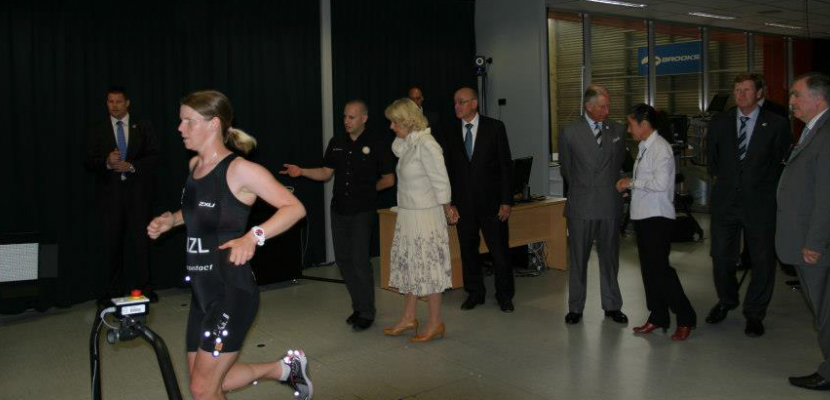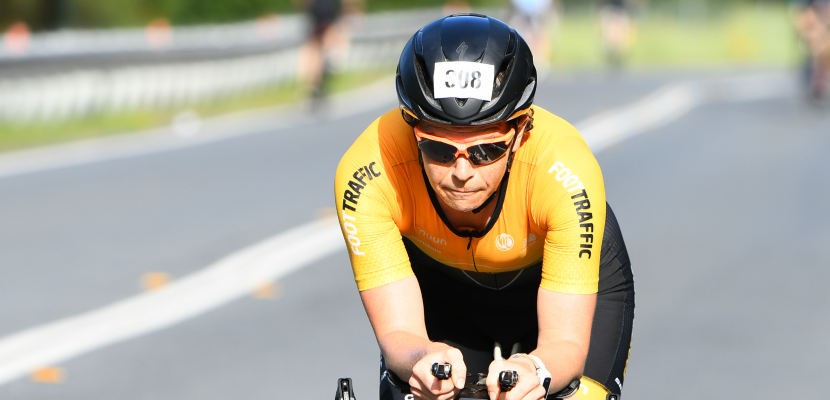
From the frontlines of COVID-19 care to space exploration, climate change research and so much more, there are brilliant women making huge strides in the areas of science, technology, engineering and maths (STEM) around the world. So, we’re zeroing in on a few of them; in particular the wonderful women on our own doorstep here at Bond University.
Growing up in New Zealand, Dr Anna Lorimer loved history and science in high school, and ultimately decided to pursue medicinal chemistry – before initiating a huge career switch, and finally, landing the role of Assistant Professor of Sport and Exercise Science at Bond, with a focus on biomechanics and anatomy.
We chatted with Dr Lorimer about her advice for girls and women wanting to pursue STEM, her own journey, and how we can inspire others to consider careers in this exciting and diverse sector.
Study Exercise and Sports Science at Bond
Want to learn from Dr Lorimer? Your fast-paced career in Exercise and Sports Science could start right here at Bond University. Discover our programs today.
Can you tell us a bit about your journey to getting involved in STEM?
Growing up I was interested in everything – I’m a giant nerd and proud of it! I like to acquire knowledge, and have a huge bank of useless facts, but this doesn’t really set out a logical career path. I love history, but I didn’t see myself becoming a history teacher, and growing up in New Zealand we don’t really have the same sort of depth of history to inform a career as they do in the UK or Europe.
The only other careers I really knew about were science-based. I came across medicinal chemistry as a new degree specialisation at the University of Auckland, and because I was good at chemistry and biology, I decided to give that a go in my undergraduate. Engineering was a possible option, but physics scared me, so I steered away from it. I pursued medicinal chemistry through my honours year and into a PhD, but by then, I wasn’t really enjoying it as much as I once had – and didn’t want to work for ‘big pharma’. So, I did one of the hardest things I’ve ever done and walked away.
Around this time, I’d started training for the Iron distance triathlon, so I worked as a personal trainer for a few years. Someone I worked with suggested I might like to work with athletes. One thing led to another, and all of a sudden, I was ‘accidentally’ doing a PhD in biomechanics – which is essentially physics with respect to human movement. I swore when I left chemistry that I would never go back to academia, but when I inevitably did end up there, I wanted the research I did to be useful and relevant, which is how my project became biomechanics focused. This is what drives me to this day – being useful and relevant!

Was there anything – or anyone – in particular that inspired you to follow a career in science?
I never really doubted that a career in science was possible as a woman. Maybe it’s just that I’m stubborn and won’t let anyone tell me I can’t do something! I also grew up in a family of all girls, so if there was something that needed doing, it was up to me to work it out myself. My Year 12 chemistry teacher and my PhD supervisor stand out as individuals who stepped back and let me solve my own problems in the context of science and learning, rather than stepping in to show me how to do it. That definitely spurred me on, because there’s so much more satisfaction in figuring it out for oneself!
What is your current role, and how did you get there?
I’m Assistant Professor of Sport and Exercise Science here at Bond University, out of the Bond Institute of Health and Sport (BIHS), our second campus. I teach Biomechanics and Functional Anatomy. As with the rest of my journey, my path to teaching at Bond was a little out of the ordinary.
I really wanted to do research – I love the problem solving, the creativity and the fact that sport and exercise science is so new that everything needs more development and understanding. Upon completion of my PhD, I worked about five different part-time jobs because, unfortunately, biomechanics is a pretty niche field, and New Zealand is very small. I eventually got a job teaching anatomy and physiology at Unitec (the equivalent of TAFE) on a 6-month contract, which I thought was great because if I hated teaching, I only had to do it for six months! Turns out, I love teaching as I get to apply my creative side to my scientific work in weird and wonderful ways.
During the two years I taught at Unitec, I also worked in the teaching and learning space, and finally was asked to teach the first-year anatomy course for osteopathy students – which meant I had to teach myself anatomy quick-smart! After time in that role, I was contacted by one of my PhD supervisors, Justin Keogh, and asked to apply for my current position at Bond as he thought I’d be a good fit. Turns out, they needed someone to teach biomechanics and anatomy!
As well as my role at Bond, I also coach a few athletes for triathlon, which allows me to use my sports science understanding in different and exciting ways.

What’s your favourite part of working in a STEM field?
When people talk about ‘left-brained’ vs ‘right-brained’, I’m pretty much 50-50! I’m very logical, and so I really enjoy the rules and problem solving of STEM, but I’m also really creative. It’s only recently that I’ve realised this is probably why I love STEM so much – the natural mixing of logic and creativity.
What has your experience learning from and collaborating with other women in STEM been like?
In general, I think the younger generation have realised that we need to support one another and that the times of climbing over one another to get ahead are in the past. I’ve found all of the women I have worked with here at Bond to be highly supportive and encouraging.
How do you think we can inspire more women and girls to get involved in STEM?
My advice is to get girls started young, when they’re naturally curious, and keep that curiosity alive through high school by giving them opportunities to learn and really enjoy STEM. Somehow, we need to switch focus from getting it right and making the grades to exploration and problem solving. That feeling of working things out and really having a good hold on a topic is so rewarding.

Do you have any advice for young girls who might be wary to express an interest in STEM subjects or career paths?
Follow your passion, whatever it is. When I left chemistry a lot of people asked me why, because I was so good at it. My answer was ‘but I don’t enjoy it’. If you are going to spend a large percentage of your life doing something, then you really should enjoy it – it’s that simple. If STEM is what gets you excited, then don’t let anyone tell you that you can’t pursue it.
Why do you think it is important for women to be represented in science?
I think we come at things from a different perspective as women. In absolutely everything, diversity breeds success, and therefore the more diverse the minds the better if we are to continue to solve the new problems that life brings about.
You can learn more about Dr Anna Lorimer’s work by visiting her website. We’ll be speaking to more incredible Women in STEM here at Bond University, so keep an eye on our blog and social media to stay in the loop.